Hyundai Staria vs Renault Trafic Bus – Performance, range & efficiency compared
Both models have their strengths – but which one suits you more?
Compare performance, efficiency, price and space directly: Hyundai Staria or Renault Trafic Bus?
Costs and Efficiency:
Looking at overall running costs, both models reveal some interesting differences in everyday economy.
Renault Trafic Bus has a a bit advantage in terms of price – it starts at 38200 £, while the Hyundai Staria costs 42400 £. That’s a price difference of around 4189 £.
Fuel consumption also shows a difference: Renault Trafic Bus manages with 6.70 L and is therefore slightly more efficient than the Hyundai Staria with 7.60 L. The difference is about 0.90 L per 100 km.
Engine and Performance:
Power, torque and acceleration are the classic benchmarks for car enthusiasts – and here, some clear differences start to show.
When it comes to engine power, the Hyundai Staria has a clearly perceptible edge – offering 225 HP compared to 170 HP. That’s roughly 55 HP more horsepower.
In acceleration from 0 to 100 km/h, the Hyundai Staria is barely noticeable quicker – completing the sprint in 10.20 s, while the Renault Trafic Bus takes 10.60 s. That’s about 0.40 s faster.
In terms of top speed, the Renault Trafic Bus performs slight better – reaching 180 km/h, while the Hyundai Staria tops out at 167 km/h. The difference is around 13 km/h.
There’s also a difference in torque: Renault Trafic Bus pulls slight stronger with 380 Nm compared to 367 Nm. That’s about 13 Nm difference.
Space and Everyday Use:
Cabin size, boot volume and payload all play a role in everyday practicality. Here, comfort and flexibility make the difference.
Both vehicles offer seating for 9 people.
In curb weight, Renault Trafic Bus is to a small extent lighter – 2031 kg compared to 2275 kg. The difference is around 244 kg.
In maximum load capacity, the Renault Trafic Bus performs clearly better – up to 4000 L, which is about 2697 L more than the Hyundai Staria.
When it comes to payload, Renault Trafic Bus clearly perceptible takes the win – 982 kg compared to 775 kg. That’s a difference of about 207 kg.
Who comes out on top?
Overall, the Renault Trafic Bus shows itself to be is largely superior and secures the title of DriveDuel Champion.
It convinces with the more balanced overall package and proves to be the more versatile choice for everyday use.

Renault Trafic Bus
Hyundai Staria
The Hyundai Staria stands out with its futuristic design, characterised by sleek lines and an expansive front grille that makes a bold statement on the road. Inside, it offers a spacious and versatile interior, providing a comfortable ride for both driver and passengers. This vehicle effortlessly combines practicality with a touch of luxury, appealing to families and professionals alike.
details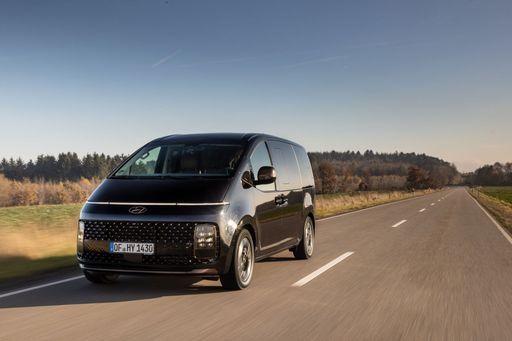 @ Hyundai Motor Company
@ Hyundai Motor Company
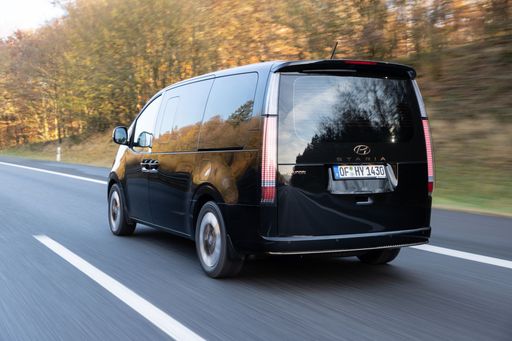 @ Hyundai Motor Company
@ Hyundai Motor Company
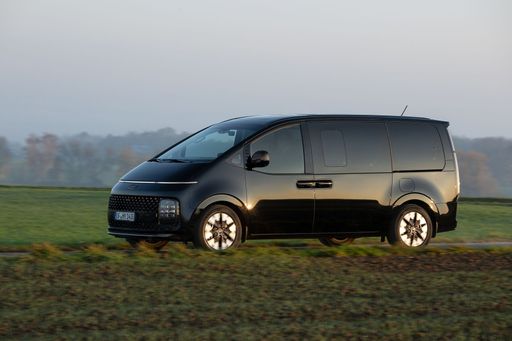 @ Hyundai Motor Company
@ Hyundai Motor Company
 @ Hyundai Motor Company
@ Hyundai Motor Company
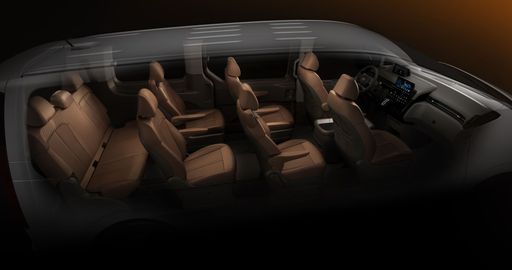 @ Hyundai Motor Company
@ Hyundai Motor Company
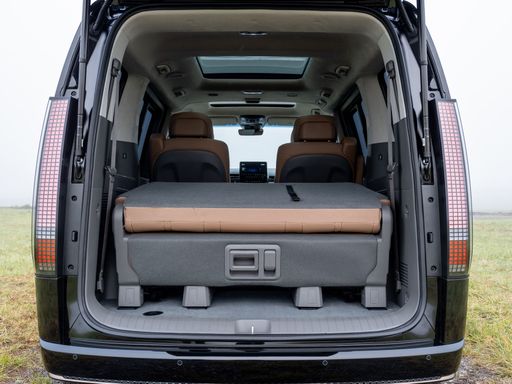 @ Hyundai Motor Company
@ Hyundai Motor Company
Renault Trafic Bus
The Renault Trafic Bus is a versatile and spacious option for those needing to transport multiple passengers comfortably. With its modern design and practical features, it is well-suited for both business and leisure purposes. Its efficient engine and smooth handling make it a reliable choice for long journeys.
details
 @ Hyundai Motor Company
@ Hyundai Motor Company
|
|
|
|
|
Costs and Consumption |
|
|---|---|
|
Price
42400 - 50500 £
|
Price
38200 - 54400 £
|
|
Consumption L/100km
7.60 L
|
Consumption L/100km
6.7 - 7.2 L
|
|
Consumption kWh/100km
-
|
Consumption kWh/100km
-
|
|
Electric Range
-
|
Electric Range
-
|
|
Battery Capacity
-
|
Battery Capacity
-
|
|
co2
172 g/km
|
co2
175 - 189 g/km
|
|
Fuel tank capacity
65 L
|
Fuel tank capacity
80 L
|
Dimensions and Body |
|
|---|---|
|
Body Type
Bus
|
Body Type
Bus
|
|
Seats
7 - 9
|
Seats
8 - 9
|
|
Doors
5
|
Doors
4
|
|
Curb weight
2275 - 2345 kg
|
Curb weight
2031 - 2352 kg
|
|
Trunk capacity
117 - 831 L
|
Trunk capacity
-
|
|
Length
5253 mm
|
Length
5080 - 5480 mm
|
|
Width
1997 mm
|
Width
1956 mm
|
|
Height
1990 mm
|
Height
1973 - 1974 mm
|
|
Max trunk capacity
431 - 1303 L
|
Max trunk capacity
3200 - 4000 L
|
|
Payload
605 - 775 kg
|
Payload
718 - 982 kg
|
Engine and Performance |
|
|---|---|
|
Engine Type
Full Hybrid
|
Engine Type
Diesel
|
|
Transmission
Automatic
|
Transmission
Manuel, Automatic
|
|
Transmission Detail
Automatic Gearbox
|
Transmission Detail
Manual Gearbox, Automatic Gearbox
|
|
Drive Type
Front-Wheel Drive
|
Drive Type
Front-Wheel Drive
|
|
Power HP
225 HP
|
Power HP
110 - 170 HP
|
|
Acceleration 0-100km/h
10.20 s
|
Acceleration 0-100km/h
10.6 - 16.5 s
|
|
Max Speed
167 km/h
|
Max Speed
161 - 180 km/h
|
|
Torque
367 Nm
|
Torque
300 - 380 Nm
|
|
Number of Cylinders
4
|
Number of Cylinders
4
|
|
Power kW
165 kW
|
Power kW
81 - 125 kW
|
|
Engine capacity
1598 cm3
|
Engine capacity
1997 cm3
|
General |
|
|---|---|
|
Model Year
2024
|
Model Year
2023 - 2025
|
|
CO2 Efficiency Class
F
|
CO2 Efficiency Class
G, F
|
|
Brand
Hyundai
|
Brand
Renault
|
What drive types are available for the Hyundai Staria?
The Hyundai Staria is available as Front-Wheel Drive.
The prices and data displayed are estimates based on German list prices and may vary by country. This information is not legally binding.
